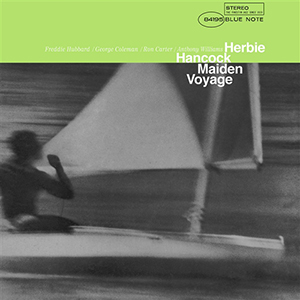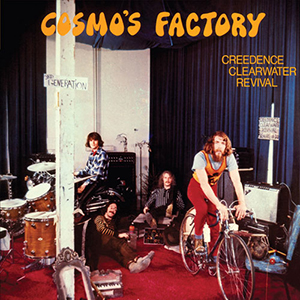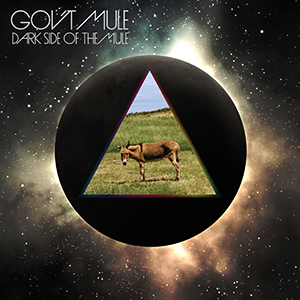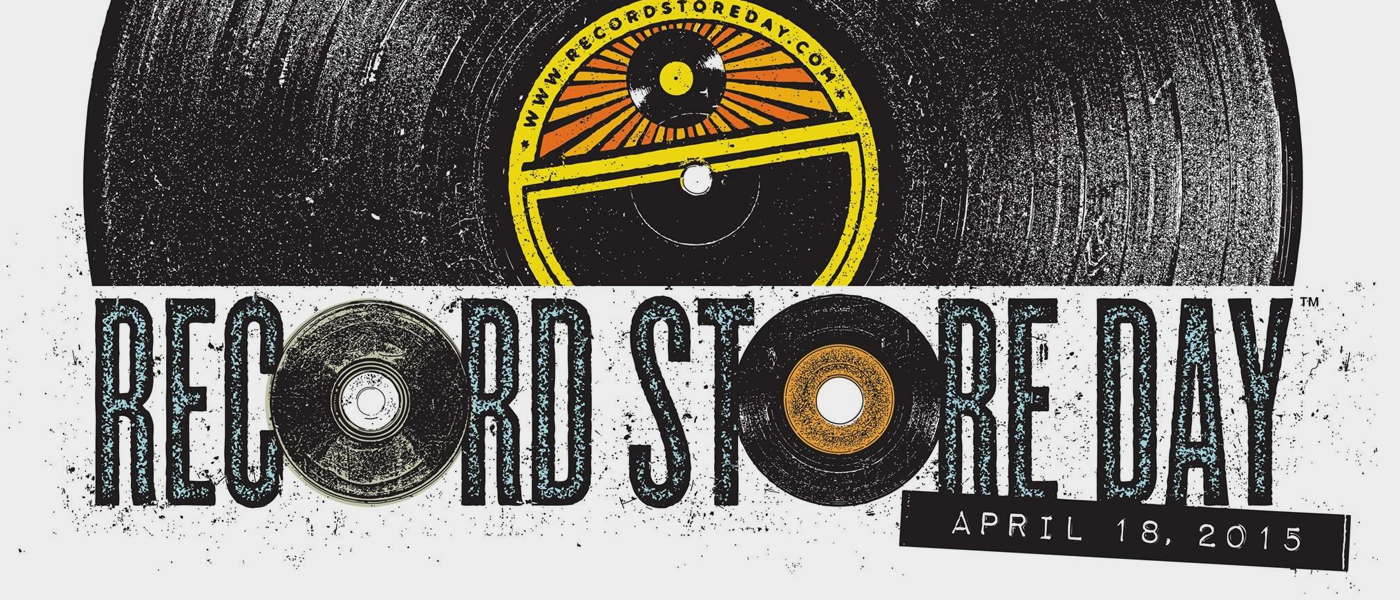Joe Henderson “Page One” Music Matters Jazz
- Performance:

- Sound:


Last year, Music Matters began issuing some of the finest vinyl I’ve ever heard as part of Blue Note Records’ 75th Anniversary. There were to be twelve titles released in total, one for each month of the label’s year-long birthday celebration. Music Matters is not new to the Blue Note game. They’d been putting out Blue Note titles for a while, but as double records pressed at 45rpm. These were phenomenal sounding, labor intensive discs. Lots of flipping and cleaning involved with those versions. I’ve found the single disc versions pressed at 33rpm to be amongst the most soul stirring titles in my collection. Apparently, I’m not alone in that opinion as the initial twelve titles have been expanded to include more records than I can probably hope to acquire. But that won’t keep me from trying.
I’m not overly familiar with Joe Henderson’s work. I’ve been peripherally aware of him for as long as I can remember, but I’d never taken the time to dig in. Lately, I’ve basically entrusted the folks at Music Matters to curate my burgeoning audiophile vinyl Jazz collection. They’ve yet to steer me wrong, and Henderson’s Page One continues that trend. I’m to understand that Page One exemplifies the Hard Bop movement of the mid-50’s. Some research suggests that Hard Bop developed as New York’s reaction to California’s Cool Jazz movement. And that’s where all the handles and designations fall apart in my ears. Hard Bop sounds cool while Cool Jazz often bops with more intention than what I’m hearing on Page One. What I’m hearing on Page One is outright Cool. “Homestretch” swings pretty ferociously, but “Blue Bossa” and “La Mesha” both feel like a night of fine dining at home with a romantic partner and mood lighting. (It may be worth noting that both of those titles were written by Kenny Dorham who handles trumpet duties on Page One. I love most everything I’ve heard from him.) “Recorda-Me” injects some Latin flavors into the gumbo while exhibiting a greater attention to detailed arrangements that would almost certainly have required more rehearsing and planning than some of the more “free” performances of the day. While I might not be the world’s foremost Jazz authority, even I can tell the difference between a sax and a trumpet, and I enjoy knowing who’s doing what on Page One without having to guess between multiple players on similar instruments. Butch Warren’s bass is especially tasty on “Jinrikisha,” a tune that seems to waft out of your speakers before folding itself back into a nice ensemble theme and resolving everything at the end. “Out of the Night” is a laid back Henderson original that closes the album on a particularly “cool” note. But don’t call it “Cool Jazz” because that will likely anger lots of folks that know more about this type of thing than I do.
Page One is another home run from the folks at Music Matters. The thing that consistently jumps out at me about these releases is the utter transparency involved. I can’t think of any other titles that approach the “in the room” vibe that you get listening to these works. The pressings are near flawless which is both invigorating (as part of an active listening experience) and frustrating (as it really shows up some of the lesser work that other companies are engaged in now). I’d recommend Page One to anyone looking to shore up their classic Jazz collection. It’s groovy.
Art Blakey and the Jazz Messengers “Moanin'” Music Matters Jazz
- Performance:

- Sound:


We’ve looked at Moanin’ by Art Blakey and the Jazz Messengers before. Classic Records (May they rest in peace) put out a lovely mono version that I’ve enjoyed having in my collection for the better part of five long years. Moanin’ is another noted exemplar of the Hard Bop genre. And this time, that makes a little more sense. Things are a little more austere on this record, generally speaking. The drums are a little drier, more impactful. The progressions are still detailed, but they flow and groove in ways that make the Hard Bop moniker a little more appropriate than I felt like it was for Page One. And, just like that, I’ve fallen for the time honored habit of pigeonholing music into categories for consumption. Does it really matter that Moanin’ is considered a part of the Hard Bop movement or is it enough to call it “Jazz?” I suppose it would help to have some lines drawn as a framework for discussion, but no one that I know is discussing these recordings anyway. I’ve touted the work that Music Matters is doing to any of my friends who would listen. But none of my friends would listen. I’m the only person I know who owns even one of these titles, let alone the only one making a run at a complete collection. And the Music Matters titles have begun, inevitably, to overlap with some of the old Classic titles that I’ve already collected. So perhaps a comparison is in order. Let’s see…
The most obvious difference between the Classic version of Moanin’ and the more recent Music Matters version is that the latter take is in stereo. The Music Matters website has posted a short article explaining why they chose to reissue the stereo versions rather than the more collectible monos so head on over there if you’re looking for a detailed explanation. The short version is that they thought the stereo versions sounded better. I usually prefer a mono recording to a stereo take, but I’m usually listening to old Rock and Roll records, and my favorite artists in that arena just didn’t care about stereo recordings. At first, I was a little turned off by the stereo mixes of these old Blue Note records, but I’ve adjusted and they all feel like my favorite pair of jeans at this point. Which is remarkable because Moanin’ has some pretty hard panning in the mix. The drums are mostly hard right, piano all left, for instance. After you’ve sat with these records for a minute, it all makes sense and the sounds start to blend and harmonize. The initial period of adjustment is almost certainly extended by the clarity of the recordings themselves. Things are so sparse on these Blue Note titles, and the Music Matters versions are so transparent, that there’s nowhere for the sounds to hide. Every note counts, and sound placement is all the more crucial. The Classic version of Moanin’ stands up just fine to my ears. Obviously, things are more centered. You don’t have all those crazy Blakey drum sounds spread out across the stage. And things are a little hotter in the Classic environment. But the Classic model can’t touch the Music Matters folks for presence and transparency. I don’t know how they do it, but the difference is marked. If you’re a dyed in the wool mono enthusiast, the choice is made for you. But if I were grading on straight sonics and warmth, I’d go with the newer version. Especially for the quieter material. It’s a great time for vinyl enthusiasts who love Jazz, no matter which way you go…
Herbie Hancock “Maiden Voyage” Music Matters Jazz
- Performance:

- Sound:


Herbie Hancock found me as a nine year old staring at my television in awe of his “Rockit” video from 1983’s Future Shock. That was the first popular record to feature DJ scratching and is well covered in the excellent documentary, Scratch, if you’re inclined to dig deeper. Later, I learned about Hancock’s Head Hunters and their contributions to the Jazz/Funk pantheon. (I guess they must make up the bulk of said pantheon because I can’t really call any other purveyors to mind right this second.) But it took me all the way until 2015 to find Maiden Voyage and I think it’s just about the perfect Jazz album, really. Released in 1965 as Hancock’s fifth album, it walks a delicate line between Jazzy exploration (that, in the hands of lesser musicians, often leaves me feeling lost in space like George Clooney in that Gravity movie), and more traditional Blues-based figures (that often leave me feeling like Superman in all those other movies). Once again, Music Matters has set their controls for the heart of awesomeness and delivered yet another pristine transcription of a classic Jazz title. I’d have never guessed quite how classic though. That part was a surprise.
This is the first record in this series that I’ve purchased outside of the originally announced twelve titles that were part of Blue Note’s 75th Birthday celebration. It bumped a couple that I had in my queue by Sonny Clark, Kenny Drew, and Lee Morgan. I’ll circle back for those, certainly. But I’d read a bit about Maiden Voyage and I was concerned that this specific title might sell out before I’d invested in a copy. Fortunately, that does not appear to be the case yet. The title, at the time of this writing, is readily available. Don’t sleep on it. Hancock, as the title suggests, recorded these tunes with the briny deep in mind. His brief essay, as printed on the album’s rear cover, outlines his mission while alluding to “the splendor of a sea-going vessel on its maiden voyage, the graceful beauty of the playful dolphins… and the awesome destructive power of the hurricane.” Match those descriptors with the title track, “Dolphin Dance,” and “The Eye of the Hurricane,” respectively, and you’ve got yourself an afternoon of warm, watery listening to look forward to. I’m not as comfortable in the ocean as I am most any other place on Earth, but hearing these compositions in the hands of these players is like coming home. I can’t say enough about the balance between the more classical Jazz expressions and some of the left leaning flights of fancy that the band members take. It’s a deft little dance, I can assure you. Some Jazz records (often beloved) get so far out there that I can scarcely find anything to latch onto. I’m always secretly of the opinion that the folks championing such recordings are simply trying to seem deep or cool. Maiden Voyage is deep and cool, but never so esoteric that you lose sight of North, South, East or West. It’s my favorite Jazz discovery of the last few years, and I wish I’d found it around the same time I discovered “Rockit.” But I wouldn’t have gotten it anyway…
Maiden Voyage gives me everything that I’ve come to expect from Music Matters Jazz. The clarity and warmth are ever present. Sadly, my pressing isn’t as silent as the other titles that I’ve collected so far. There are a couple of pops and ticks on side one and a corresponding set on side two. They’re not overwhelming, but I might try for a pristine copy. The content is that good.
And I’m that nuts. So it goes.
Creedence Clearwater Revival “Cosmo’s Factory” Analogue Productions
- Performance:

- Sound:


Ah, Creedence. So good that I forget they’re there. Know what I mean? I have the same deal with Led Zeppelin. I love both bands dearly, but rarely reach for either come record playing time. (I still “play” records. Other folks “spin” them, I guess. Bands “drop” them all the time, now. What can you do?) I didn’t trust the new Zeppelin reissues, and so I haven’t bought (or heard) a one. I trust the latest CCR reissues implicitly for a couple of reasons. One: they’re being done (again) by Analogue Productions. Second: Kevin Gray and Steve Hoffman were at the controls. And what better place to start than with Cosmo’s Factory? That one was recorded right down the street from my apartment. I think about it every time I walk by what was once Wally Heider’s studio. Cosmo’s, and Everybody Knows This Is Nowhere, and The Heart of Saturday Night. All done in that same Hyde Street location. But we’re here for Cosmo’s and I’ve gone and let myself get distracted. Let’s see…
Surely, you don’t need me to sell you an audiophile version of Cosmo’s Factory, right? I get a little warped when I think about how fast bands used to work compared to the way we do things now. CCR released five (5!) ludicrously great records between July 5, 1968 and July 25, 1970. Cosmo’s was the last in that line. Think about that for a second. Almost every great CCR song that you’ve sung along to your whole life was released within the span of about two years. Growing up in Georgia, I assumed that these boys were from my neck of the woods. Turns out, they were from the neck of the woods where I am now. El Cerrito, to be exact, but I’m still convinced that the players bled swamp water. Former members might say that John Fogerty drove them into the ground with relentless rehearsing and touring. I say, “Whatever it takes.” Would you trade a relationship with your bandmate 40 years down the line to make five of the greatest American Rock and Roll records ever? Depends on the bandmate, maybe. I know this much: In 1970, when CCR was recording Cosmo’s Factory, John Fogerty had taken complete artistic control of the band and they were humming along like a damn comet shooting hits from their jet stream every other day. Crazy hits, too. This record carries “Travelin’ Band,” “Lookin’ Out My Back Door,” “Run Through The Jungle,” “Up Around The Bend,” “Who’ll Stop The Rain,” and “Long As I Can See The Light” within its grooves. And that doesn’t even count the “Grapevine” cover or any of the Blues rave-ups. “Run through the Jungle” is especially rocking on this specific reissue as the acoustic guitars can clearly be heard fighting with each other from opposite sides of your stereo. Beyond all that, you get all the depth and clarity that you would expect from an Analogue Productions… production. The soundstage is not especially broad, but I suspect that’s true of the original too. I also suspect that the depth and punchiness of the bass on this version far outweighs what was on the original. Regardless, you’d be crazy to think you could find an original pressed this flawlessly in this condition. Mine is perfect. I still lack three of those five titles and will jump all over this series to remedy that situation. The material dictates its inclusion in my Rock collection. Analogue Productions dictates that I act now.
Gov’t Mule “Dark Side of the Mule” Evil Teen
- Performance:

- Sound:


Man, the “you’ve got to see them live, their records don’t do them justice” conversation gets old, huh? It’s pretty cliché, by now. People used to tell me that about Phish all the time, but I wouldn’t be cowed. I’ve never heard the first note of live music out of that band because… I don’t like the songs. Gov’t Mule is a bit different. I like a lot of their songs. And I’ve seen them live a bunch of times. But I’ve never found any of their studio records palatable. Too clean. They are, in a live setting, the opposite of clean. In fact, I walked by the group’s members after a show in Clemson, South Carolina once, and I instinctively held my breath. Luckily, as is the case for a few bands these days, Gov’t Mule has gotten into their “vaults” and are releasing live recordings from days of yore. So far, they’ve released a Stones cover album, and now they’ve released an album of Pink Floyd tunes. Both Stoned Side of the Mule and Dark Side of the Mule were recorded at separate Halloween shows. The “Floyd show” happened in 2008. I wish I’d been at the Orpheum for this one.
The thing about Warren Haynes is that he ends up taking over whatever band he’s in. He’s done it with the Dead, the Allman Brothers Band, and there’s never been any question about who was leading Gov’t Mule. You just get the feeling that this guy knows more about music than anyone else. He’s a tasteful guitarist, no doubt, but he’s also an encyclopedia of Rock and Roll knowledge. When his band covers Pink Floyd songs, they play the Pink Floyd songs that you want to hear. To that end, Dark Side of the Mule opens with “One Of These Days.” Good night, America, we’ve got a live vinyl version of Warren Haynes playing slide guitar on “One Of These Days!” And then “Fearless.” That one is especially heavy in the Mule’s hands because their live version carries the same plodding, deliberate tempo that Floyd used on Meddle, and it almost sounds impossible. Matt Abts is a gifted drummer and really nails it on this song. You’d have thought that the live energy in the room would just kick a song like this into a higher gear, but Abts holds it steady throughout, and it makes for a hell of a live document. This was also Jorgen Carlsson’s second show as the band’s bassist. I saw him play a Halloween set of songs by the Who a few years back in Oakland, and I was blown away by him. In my opinion, he brought the Mule back from the soft edge of oblivion. They’d replaced the dearly departed Allen Woody with a series of crack bassists, but Carlsson really brought the band’s edge back with him. I wouldn’t want to have to follow in Woody’s musical footsteps, but it just doesn’t seem so difficult for a man of Carlsson’s abilities. Abts and Haynes would probably tell you that no one will ever replace Allen Woody, and that’s almost certainly true, but Carlsson has his own fire and he plays fearlessly too. The Mule used a couple of Floyd’s touring backup singers to flesh out some of the tunes and they brought Ron Holloway in to handle some sax solos as well. All of this works to great effect throughout, especially on the “Shine On You Crazy Diamond” suite.
This double record is well pressed and comes with a download code printed on the interior of the gatefold. It’s got it all. If you’ve only heard studio Mule, you’ve gotta see them live. I’d apologize for playing that card, but sometimes you can’t outrun the truth. Make it happen.


